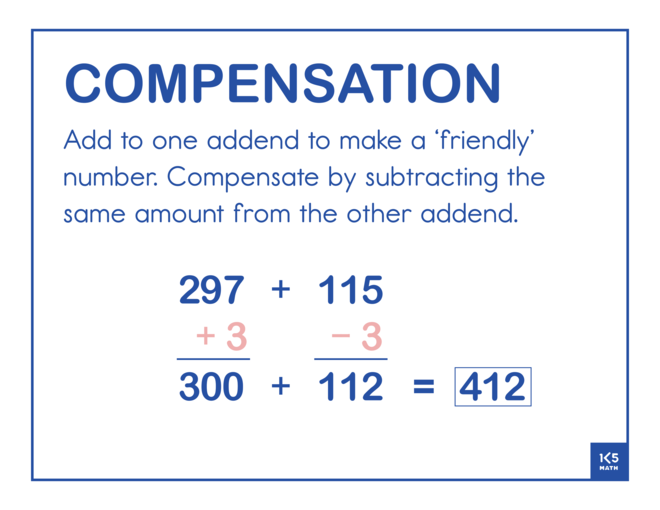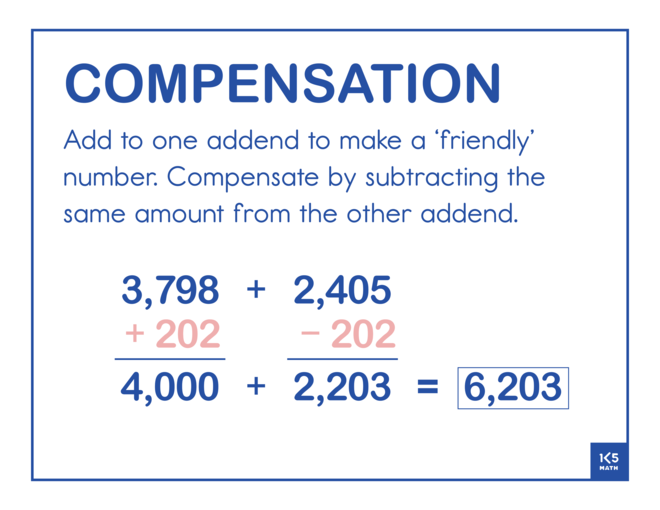Number Talks
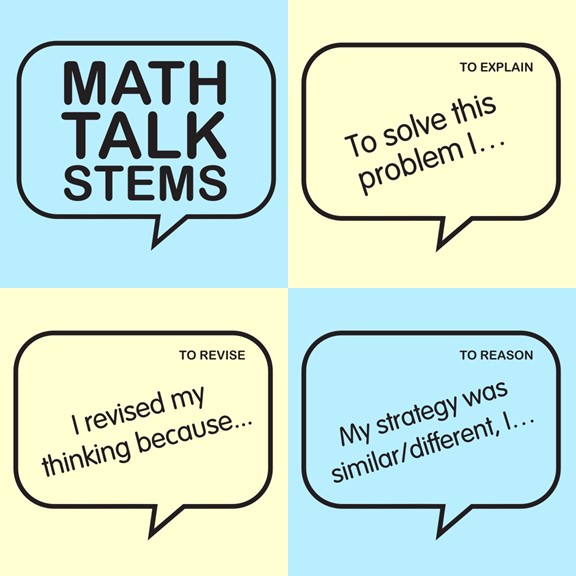
Number Talks are a valuable classroom routine for building flexibility, efficiency and accuracy in mathematical thinking through the articulation and sharing of mental math strategies. When used regularly Number Talks provide a powerful way to help students understand the numerical relationships that are critical to understanding mathematics and result in classrooms where students feel encouraged to explain, justify, and make sense of math.
The anchor charts on this page provide examples of five addition strategies that can be explored during Number Talks, namely Use Doubles, Make a Ten, Place Value, Add Up in Chunks and Compensation. These five strategies can all be extended from one-digit to multi-digit numbers, fractions and decimals.
Free Downloads: Copies of the addition strategy charts shown below (with some additional charts) can be downloaded here. For copies of subtraction strategy charts see here.
An important aspect of a Number Talk is that students articulate and share their strategies in order to justify their thinking and make sense of the math. To scaffold this work a set of 30 Math Talk Stems for classroom display and a student Math Talk bookmark can be downloaded here in full page size or here in half-page size.
Use Doubles can be used to mentally solve problems where one addend is one or two more than the other. Once students demonstrate fluency with single digit and teen doubles facts (0+0-19+19) they can begin to use them as anchors for near-doubles facts such as 6 + 7 or 13 + 15. This can be extended to work with larger numbers (e.g. 398 + 399), fractions and decimals (e.g. 4.5 + 4.7).
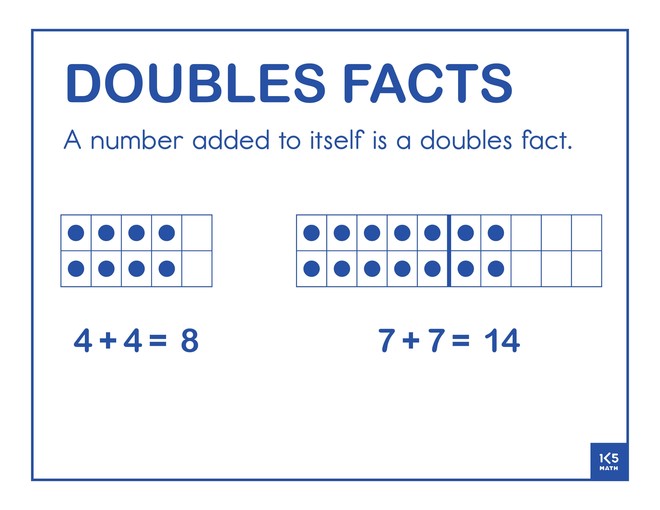
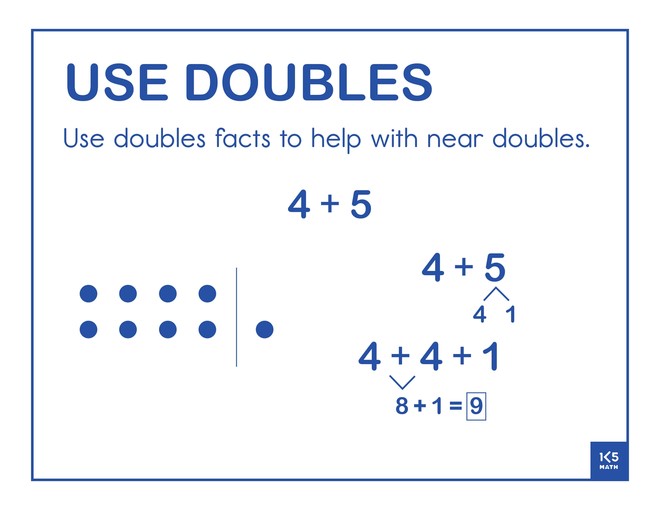
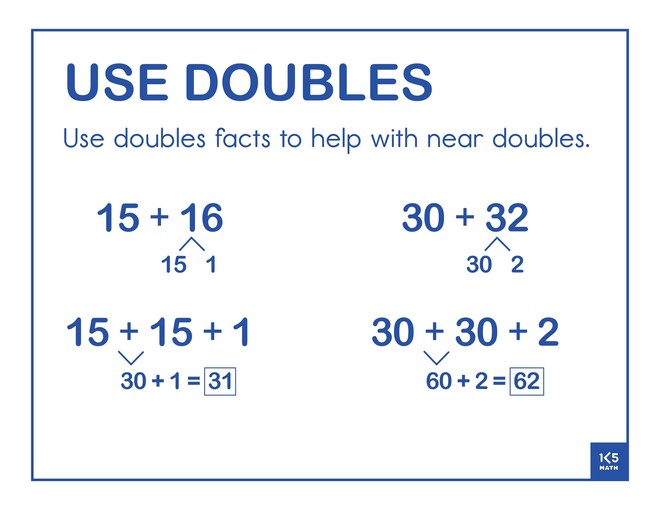

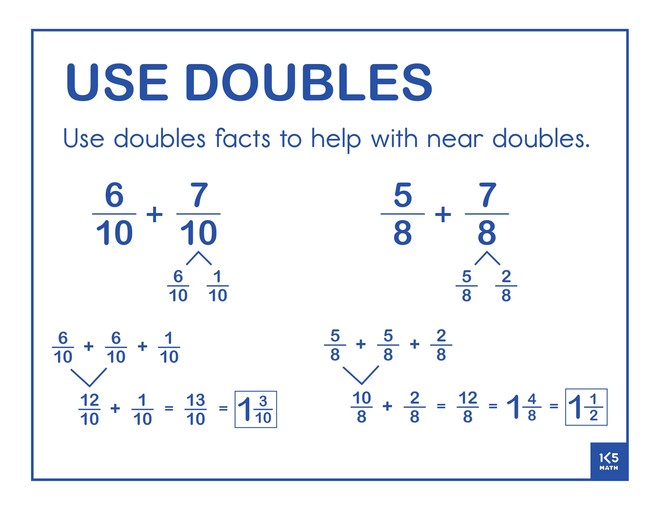

Make a Ten (also known as Bridge to Ten) is a useful mental strategy for figuring out the sum when one addend is close to ten, or a multiple of ten. By using ten as a reference point, we can start with one addend, bridge the gap to ten using part of the second addend, then add the balance. Repeated practice with one digit addends, using concrete materials such as ten frames and rekenreks, is necessary to build conceptual understanding of why this strategy works before moving to multi-digit addends. In upper elementary this strategy can be extended to mentally solve problems involving fractions and decimals where one addend is close to a whole number (e.g. 3.9 + 1.6).
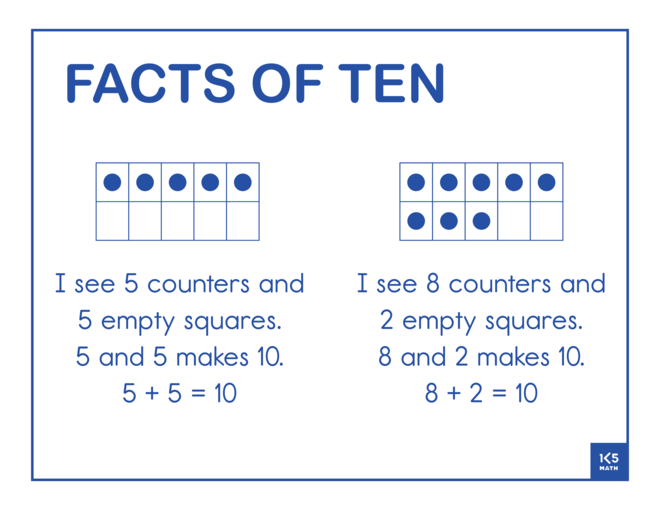
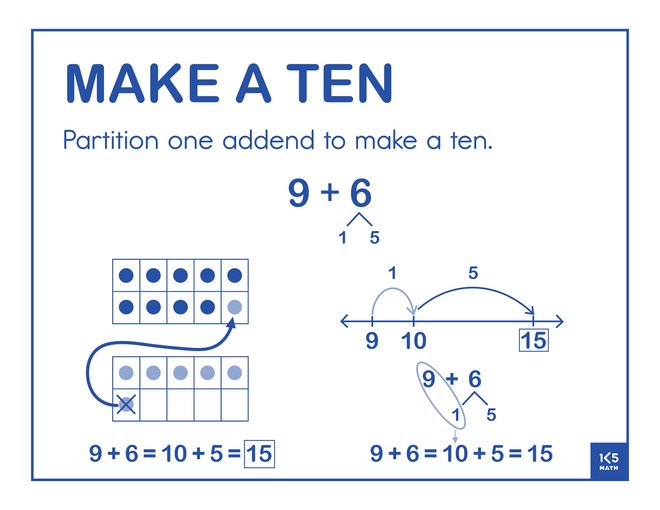
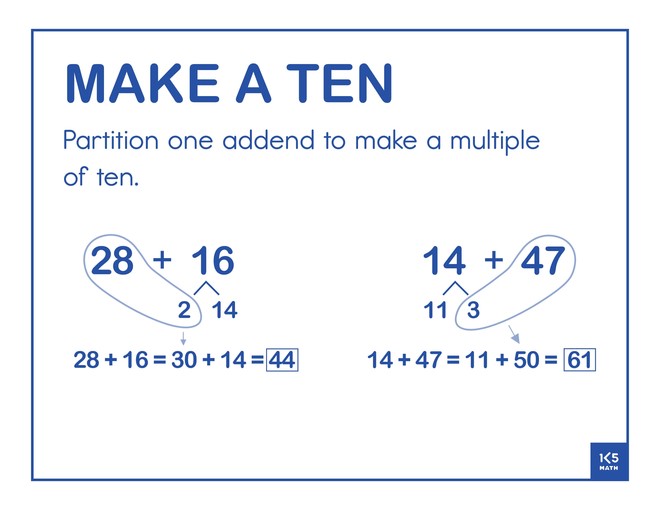
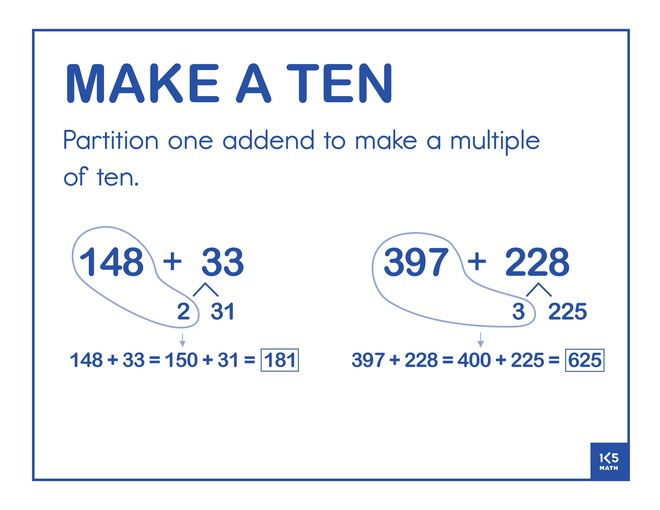
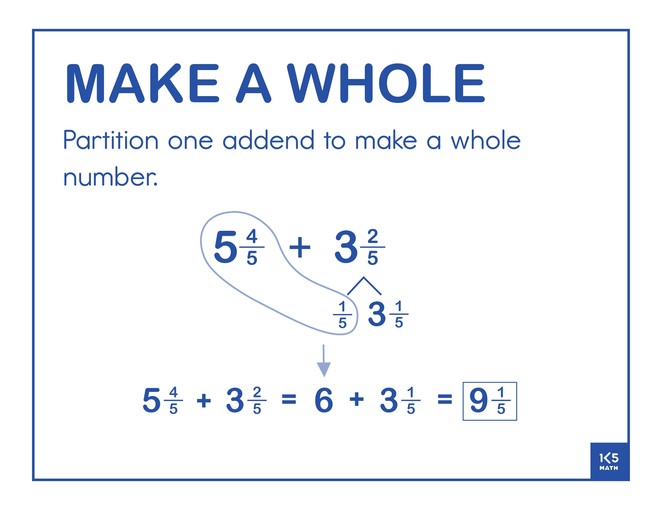
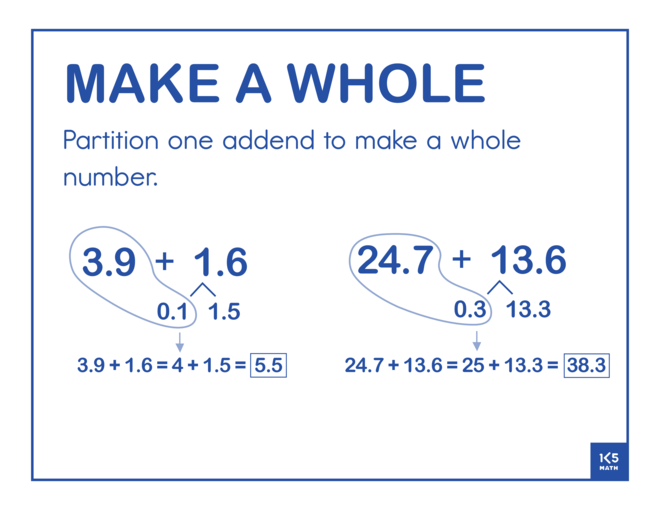
The Add Up in Chunks strategy involves keeping the larger addend whole while adding 'friendly' chunks of the second addend. An open number line is a useful tool to use when discussing this strategy. To prepare for this strategy students need to develop fluency with adding multiples of ten to any number.

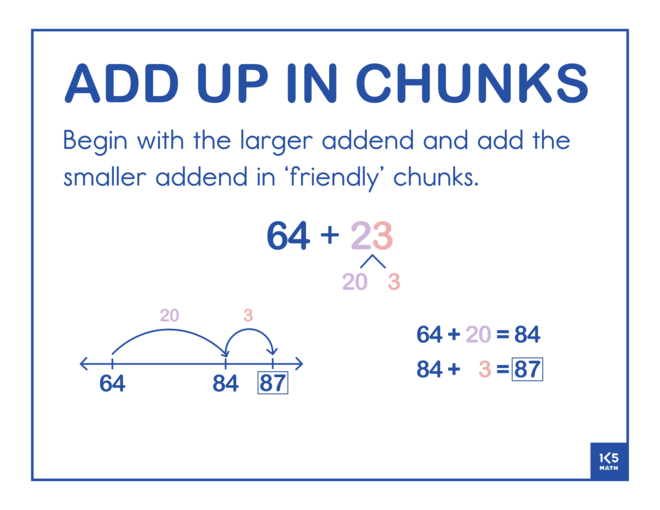
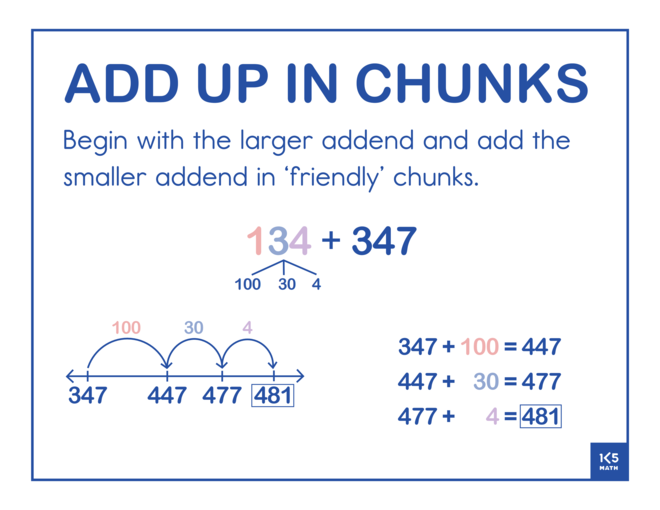
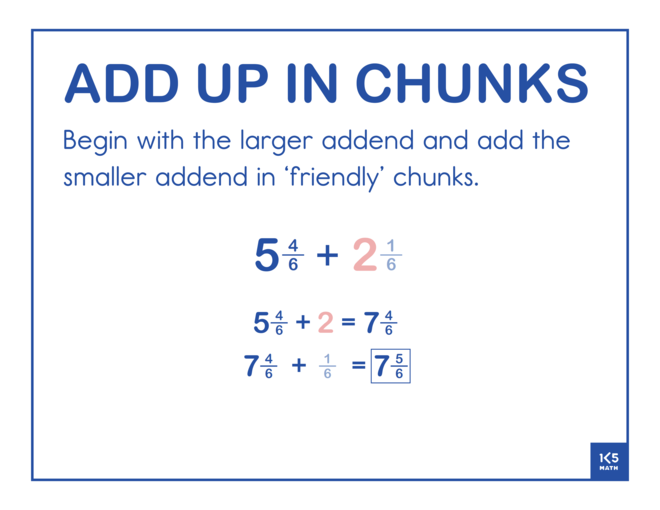

The Place Value strategy involves decomposing numbers into their respective place values and adding mentally from left to right to combine like place value amounts. Students often select this strategy when the two addends in an addition problem have no obvious relationship to one another.




The Compensation strategy involves adding a number to one addend to make a 'friendly' number and subtracting the same number from the other addend without changing the sum. Start with problems where one addend has enough in the ones place to give something to the other addend to make it a multiple of ten (e.g. 18 + 7 or 34 + 19). Once students understand how this strategy works they can apply it larger numbers, fractions and decimals. Asking questions such as, "Did anyone use Compensation in a different way?" will often lead to good discussions about multiple ways to use this strategy to solve a given problem.

